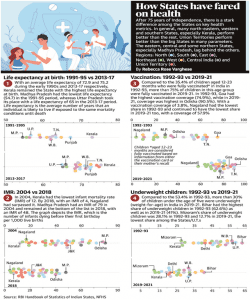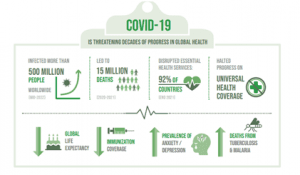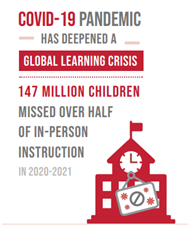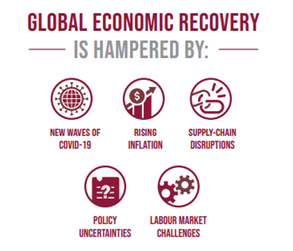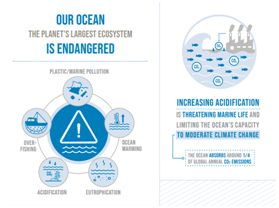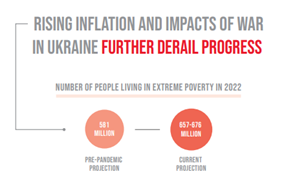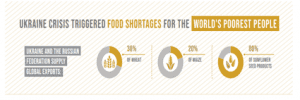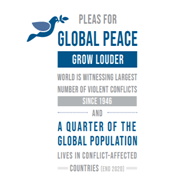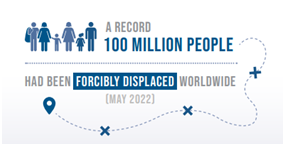DAILY CURRENT AFFAIRS (AUGUST 16, 2022)
THE INDIAN MODERN HISTORY
1. WOMEN HEROES OF INDIA’S FREEDOM STRUGGLE
THE CONTEXT: During the Independence Day address to the nation from the ramparts of the Red Fort, Prime Minister hailed “nari shakti”, and urged people to pledge to not do anything that lowers the dignity of women. He also paid tribute to women freedom fighters for showing the world the true meaning of India’s “nari shakti”.
THE EXPLANATION:
Prime Minister hailed “nari shakti”, and urged people to pledge to not do anything that lowers the dignity of women. He also paid tribute to women freedom fighters like Laxmibai, Jhalkari Bai, Durga Bhabhi, Rani Gaidinliu, and VeluNachiyar, among others, embody the spirit of India’s ‘nari shakti’ and for showing the world the true meaning of India’s “nari shakti” and stressed that women is an important pillar of India’s growth.
RANI LAXMIBAI
- The queen of the princely state of Jhansi, Rani Laxmibai is known for her role in the First War of India’s Independence in 1857. Born Manikarnika Tambe in 1835, she married the king of Jhansi. The couple adopted a son before the king’s death, which the British East India Company refused to accept as the legal heir and decided to annex Jhansi.
- Refusing to cede her territory, the queen decided to rule on behalf of the heir, and later joined the uprising against the British in 1857. Cornered by the British, she escaped from Jhansi fort. She was wounded in combat near Gwalior’s Phool Bagh, where she later died. Sir Hugh Rose, who was commanding the British army, is known to have described her as “personable, clever…and one of the most dangerous Indian leaders”.
JHALKARI BAI
- A soldier in Rani Laxmibai’s women’s army, Durga Dal, she rose to become one of the queen’s most trusted advisers. She is known for putting her own life at risk to keep the queen out of harm’s way. Till date, the story of her valour is recalled by the people of Bundelkhand, and she is often presented as a representative of Bundeli identity.
- According to Ministry of Culture’s Amrit Mahotsav website, “Many Dalit communities of the region look up to her as an incarnation of God and also celebrate Jhalkaribai Jayanti every year in her honour.”
DURGA BHABHI
- Durgawati Devi, who was popularly known as Durga Bhabhi, was a revolutionary who joined the armed struggle against colonial rule. A member of the Naujawan Bharat Sabha, she helped Bhagat Singh escape in disguise from Lahore after the 1928 killing of British police officer John P Saunders.
- During the train journey that followed, Durgawati and Bhagat Singh posed as a couple, and Rajguru as their servant. Later, as revenge for the hanging of Bhagat Singh, Rajguru, and Sukhdev, she made an unsuccessful attempt to kill the former Punjab Governor, Lord Hailey.
- Born in Allahabad in 1907 and married to Hindustan Socialist Republican Association (HSRA) member Bhagwati Charan Vohra, Durgawati, along with other revolutionaries, also ran a bomb factory in Delhi.
RANI GAIDINLIU
- Born in 1915 in present-day Manipur, Rani Gaidinliu was a Naga spiritual and political leader who fought the British.
- She joined the Heraka religious movement which later became a movement to drive out the British. She rebelled against the Empire, and refused to pay taxes, asking people to do the same. The British launched a manhunt, but she evaded arrest, moving from village to village.
- Gaidinliu was finally arrested in 1932 when she was just 16, and later sentenced for life. She was released in 1947. Prime Minister Jawaharlal Nehru, according to the Amrit Mahotsav website, described Gaidinliu as the “daughter of the hills”, and gave her the title of ‘Rani’ for her courage.
RANI CHENNAMMA
- The queen of Kittur, Rani Chennamma, was among the first rulers to lead an armed rebellion against British rule. Kittur was a princely state in present-day Karnataka.
- She fought back against the attempt to control her dominion in 1824 after the death of her young son. She had lost her husband, Raja Mallasarja, in 1816. She is seen among the few rulers of the time who understood the colonial designs of the British.
- Rani Chennamma defeated the British in her first revolt, but was captured and imprisoned during the second assault by the East India Company.
BEGUM HAZRAT MAHAL
- After her husband, Nawab of Awadh Wajid Ali Shah, was exiled after the 1857 revolt, Begum Hazrat Mahal, along with her supporters, took on the British and wrested control of Lucknow. She was forced into a retreat after the colonial rulers recaptured the area.
VELU NACHIYAR
- Many years before the revolt of 1857, VeluNachiyar waged a war against the British and emerged victorious.
- Born in Ramanathapuram in 1780, she was married to the king of Sivagangai. After her husband was killed in battle with the East India Company, she entered the conflict.
- She is remembered for producing the first human bomb as well as establish the first army of trained women soldiers in the late 1700s
- “She went on to produce the first human bomb as well as establish the first army of trained women soldiers in the late 1700s,” says the Amrit Mahotsav website. Her army commander Kuyili is believed to have set herself ablaze and walked into a British ammunition dump. She was succeeded by her daughter in 1790, and died a few years later in 1796.
2. COMMEMORATING PARTITION HORRORS REMEMBRANCE DAY ON AUGUST 14
THE CONTEXT: India is commemorating August 14, as Partition Horrors Remembrance Day. The commemoration was announced by Prime Minister in 2021.
THE EXPLANATION:
- The day would be observed every year to commemorate the “struggles and sacrifices” of millions of people who were displaced and lost their lives during Partition.
- On August 14, Pakistan emerged as a political entity after Partition and is observed as Independence Day of Pakistan.
Significance
- This move by Prime Minister becomes significant in the backdrop of situation in Afghanistan and advance of the Taliban raising old spectres in the region.
Partition Horrors Remembrance Day
- This day is a national Memorial Day in India, that was announced to be observed on August 14. The day commemorates the victims and sufferings of people during Partition of India. It remembers the sufferings of Indians during partition. The day was announced with the aim of reminding Indians the need of removing social divisions and disharmony. It seeks to further strengthen the spirit of oneness, social harmony and human empowerment.
About Partition
- Partition was the division of British India into two independent dominions namely India and Pakistan. These two dominions have gone through further reorganisation. Dominion of India is called as Republic of India. The Dominion of Pakistan was composed of Islamic Republic of Pakistan and People’s Republic of Bangladesh.
- Partition basically divided two provinces, Bengal and Punjab on the basis of district-wide non-Muslim or Muslim majorities. Partition also led to the division of British Indian Army, Royal Indian Navy, Indian Civil Service, central treasury and railways. The partition was done in accordance to the Indian Independence Act 1947. The act also dissolved the British Raj in India. Dominions of India and Pakistan legally came into existence on 15 August 1947.
Why partition is a horror?
- Partition led to the displacement of some 10 and 20 million people on the religious lines, creating a refugee crisis in India and Pakistan. It is marked with large-scale violence that ultimately created an everlasting atmosphere of hostility and suspicion between India and Pakistan.
THE HEALTH ISSUES
3. POLIO BEEN FOUND IN LONDON, NEW YORK AND JERUSALEM
THE CONTEXT: Polio, a deadly disease that used to paralyze tens of thousands of children every year, is spreading in London, New York and Jerusalem for the first time in decades, spurring catch-up vaccination campaigns.
THE EXPLANATION:
Polio- A Dreaded disease
- Polio terrified parents around the world for the first half of the 20th century. Affecting mainly children under five, it is often asymptomatic but can also cause symptoms including fever and vomiting. Around one in 200 infections leads to irreversible paralysis, and among those patients, up to 10% die.
- There is no cure, but since a vaccine was found in the 1950s, polio is entirely preventable. Globally, the wild form of the disease has almost disappeared.
- Afghanistan and Pakistan are now the only countries where the highly infectious disease, spread mainly through contact with faecal matter, remains endemic. But this year, imported cases were also found in Malawi and Mozambique, the first in those countries since the 1990s.
VALUE ADDITION:
About:
- Polio is a highly infectious disease, caused by the virus which multiplies in the intestine, from where it can invade the nervous system and can cause paralysis.
- Once that happens, the patient is crippled for life because there is no treatment for the affliction. Colloquially they are referred to as wild polio virus.
Variants:
There are three types of wild poliovirus:
- Type 1: still exists but efforts are going on to eradicate it.
- Type 2: eradicated.
- Type 3: eradicated.
Transmission
- The virus is transmitted by person-to-person, mainly through the faecal-oral route or less frequently, by a common vehicle (contaminated water or food).
- Because the virus lives in the faeces of an infected person, people infected with the disease can spread it to others when they do not wash their hands well after defecating.
Endemism:
- Currently, wild poliovirus is endemic in two countries: Pakistan and Afghanistan.
- The detection of Type 1 outside the two countries where the disease is endemic demonstrates the continuous risk of international spread of the disease until every corner of the world is free of Type 1.
4. WHO NEW NAMES FOR MONKEYPOX VARIANTS
THE CONTEXT: Recently, the World Health Organisation (WHO) rechristened the variants of monkeypox virus that are currently in circulation. It was done to avoid any cultural or social offence. Monkeypox variant has been renamed as “Clades I, IIa and IIb”.
THE EXPLANATION:
- Phylogeny and nomenclature of known and new monkeypox virus variants or clades was reviewed by experts in pox virology and representatives of research institutes from worldwide.
- Clades have been renamed using Roman numerals, on the recommendations of experts.
- Former Congo Basin (Central African) clade has been renamed as Clade one (I) while the former West African clade has been renamed as Clade two (II). Clade II also comprises of two subclades.
About Monkeypox:
- Monkeypox is an ongoing outbreak. First case of the viral disease was reported in May 2022 in the United Kingdom. First case was reported in individual with travel links to Nigeria. Monkeypox disease is endemic to Nigeria. For the first time, this disease is being reported outside Central and West Africa. It was declared a public health emergency of international concern on July 23, 2022.
- Monkeypox cases have been reported in over 80 countries. Considering this, the WHO has declared it as a global health emergency. The confirmed cases have reached over 32,000. In Delhi, 5 monkeypox cases have been reported.
Symptoms of monkeypox:
Monkeypox is a viral infection, that displays week or two after exposure with the virus. Common symptoms include fever, followed by rash with lesions. The lesions last for 2–4 weeks before falling off.

THE GOVERNMENT SCHEMES AND INTERVENTIONS
5. NATIONAL INTELLECTUAL PROPERTY AWARENESS MISSION (NIPAM)
THE CONTEXT:The National Intellectual Property Awareness Mission (NIPAM) was launched on December 8, 2021 by Ministry of Commerce & Industry in association with Intellectual Property Office and Office of Controller General of Patents, Designs and Trademarks (CGPDTM).
THE EXPLANATION:
Under this programme, awareness and training are provided on Intellectual Property (IP). This scheme has met its goal of training one million students on July 31, 2022, before the deadline of August 15, 2022.
IP Awareness:
- Union Ministry of Commerce and Industry, has mandated to increase IP awareness, in line with the Azadi ka Amrit Mahotsav. This is because, IP awareness is significant to ensure that intellectual capital developed in country is recognised and protected in order for IP producers to take advantage.
- IP encourages and extends support to innovation and creativity, that are contributing towards societal cultural and economic progress.
- It encourages inventors, artists and authors, as well as ensures sustainability of research and development.
About National Intellectual Property Awareness Mission:
The National Intellectual Property Awareness Mission targets students in two levels:
- Level A– It includes school students of class 9th to 12th.
- Level B – It includes students from Universities or Colleges
This programme was launched with the aim of raising and stimulating innovation and creativity, and thus contributing to cultural and economic development of society. It seeks to contribute towards creation of an Aatmanirbhar Bharat by increasing awareness on IP among one million students across India.
VALUE ADDITION:
What is IPR?
- Intellectual Property Rights (IPR) are the rights acquired by an owner of an intellectual property.
- Intellectual property is a category of property that includes intangible creations of the human intellect.
- In simple terms, it refers to creations of the mind, such as
- inventions
- literary & artistic works
- designs & symbols,
- names & images used in commerce.
- The main purpose of intellectual property law is to
- encourage the creation of a wide variety of intellectual goods &
- strike the right balance between the interests of innovators & wider public interest.
6. EXPLAINED: DIGIYATRA, THE CONTACTLESS PASSENGER PROCESSING SYSTEM FOR AIRPORTS
THE CONTEXT: The Delhi International Airport Ltd (DIAL), run by GMR, announced the soft launch of the Centre’s DigiYatra initiative, rolling out the beta version of its app for Android platforms. DigiYatra , the passenger processing system based on facial recognition technology, has been piloted at the Delhi airport and has had the required infrastructure set up at the airport’s Terminal 3.
THE EXPLANATION:
What is DigiYatra and how will it work?
- DigiYatra envisages that travellers pass through various checkpoints at the airport through paperless and contactless processing, using facial features to establish their identity, which would be linked to the boarding pass.
- With this technology, the entry of passengers would be automatically processed based on the facial recognition system at all checkpoints – including entry into the airport, security check areas, aircraft boarding, etc.
How can people avail the DigiYatra facility?
- To use this facility, passengers will need to first download the DigiYatra app. The Android version of the app is out, while the iOS version is expected to be released in the coming weeks. Users can register on the app using Aadhaar credentials, followed by a selfie with the Aadhaar card. After this, vaccination details using CoWIN credentials will have to be added to the app. Then, the person will have to scan his or her boarding pass with the QR code or Bar code, after which the credentials will be shared with the airport.
- For entry into the airport, passengers will need to scan their boarding passes at the e-gate and look into the facial recognition system camera installed there. A similar method will be applicable for entry into other checkpoints.
How is DigiYatra being implemented?
- Recently, the Consultative Committee of the Ministry of Civil Aviation met to discuss the DigiYatra project. The project is being implemented by the DigiYatra Foundation — a joint-venture company whose shareholders are the Airports Authority of India (26% stake) and Bengaluru Airport, Delhi Airport, Hyderabad Airport, Mumbai Airport and Cochin International Airport. These five shareholders equally hold the remaining 74% of the shares.
- The DigiYatra Foundation will be the custodian of the passenger ID validation process. It will also define the criteria for compliance and guidelines for the local airport systems. There will be regular audits of the various compliances and guidelines (including guidelines on security, image quality, and data privacy) defined by the DigiYatra guidelines for the local airport Biometric Boarding Systems.
THE PRELIMS PERSPECTIVE
7. PRESIDENT’S TATRAKSHAK MEDAL (PTM)
THE CONTEXT: Recently, the President of India approved around 107 gallantry awards for the armed forces and Central Armed Police Forces (CAPF). It comprises of 3 Kirti Chakras and 13 Shaurya Chakras. Apart from that, 81 Sena Medals, 1 Nao Sena Medal and 2 Bar to Sena medals were also announced.
THE EXPLANATION:
- 40 Mention-in-Despatches for Indian Army, 1 to for Indian Air Force and another for Army Dog Axel (posthumously) was also approved by the President, to honour their significant contributions in military operations like Operation Tirkit and Operation Snow Leopard.
- Kirti Chakra was awarded to Naik Devendra Pratap Singh from the Army, for his courage and devotion in eliminating two hardcore terrorists at Pulwama.
- Shaurya Chakra was awarded to 8 Army personnel, including two posthumously. It was also awarded to one personnel from Indian Navy.
- Out of 8 Shaurya Chakra awardees, 2 are from Para Special Forces while rest were from Rashtriya Rifles in Kashmir Valley.
- All Shaurya awards were given for conducting counter-terror and counter-insurgency operations in Jammu & Kashmir.
- Kirti Chakra was awarded posthumously to Constable Sudip Sarkar and sub-inspector PaotinsatGuite from BSF, for their bravery away from the battle field.
President’s Tatrakshak Medal
On the occasion, President also approved 3 Tatrakshak Medals (TM) to Coast Guard personnel, to honour their acts of conspicuous gallantry, meritorious service and exceptional devotion to duty. It is a military decoration, that is presented for selfless devotion and distinguished service in Indian Coast Guard. President of India confers the award on the occasion of national celebrations, Republic Day and Independence Day.
POINTS TO REMEMBER: UPSC 2021 QUESTION ON BHARAT RATNA
Q. Consider the following statements in respect of Bharat Ratna and Padma Awards:
- Bharat Ratna and Padma awards are titles under the Article 18 (1) of the Constitution of India.
- Padma Awards, which were instituted in the year 1954, were suspended only once.
- The number of Bharat Ratna Awards is restricted to a maximum of five in a particular year.
Which of the above statements are not correct?
a) 1 and 2 only
b) 2 and 3 only
c) 1 and 3 only
d) 1, 2 and 3
Answer: D
THE DATA POINT
